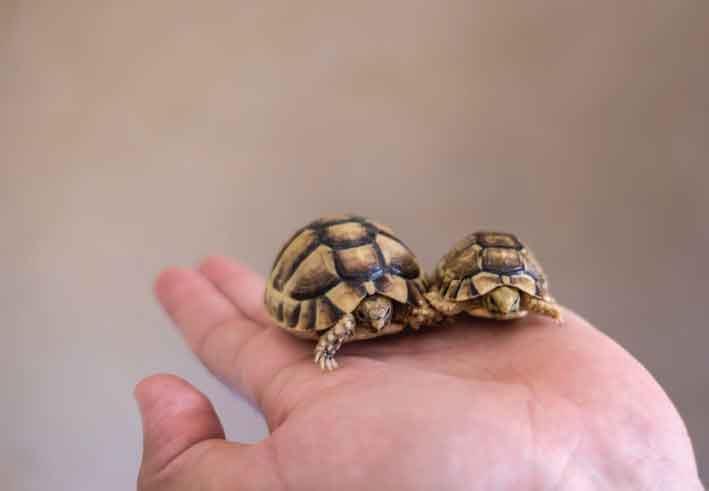In the late 1980s, the Convention on International Trade in Endangered Species act was approved in Malta. It aimed to regulate the import and export of endangered species. This helped to alleviate the pressure that was being placed on wild populations of animals by over-collection for the pet trade. However, before this act came into place, there were no restrictions on the importation of endangered animals into the country.
That is one of the reasons why some people in Malta ended up having endangered tortoises as pets explained Luke Sultana.
“Sometimes I get a call from someone to check their tortoise and when I get there I find it’s a rare species. Often the client would not know how the tortoise came into their possession, it could be that they are a now old and would have had it for years, or that they inherited it from their parents, as tortoises often live longer than their owners,” Mr Sultana said, “and it has only been since around 1986 that it became necessary for CITES paperwork to accompany endangered reptiles, before that you could pretty much do what you wanted, so many animals would have an unknown origin.”
Sultana has had an interest in exotic animals, and specifically tortoises since childhood, but he began breeding these animals when he came across Egyptian tortoises in Malta, a species of tortoise of which there are only about 3000 left in the wild.
“I began to notice that even though Egyptian tortoises are a rare pet in mainland Europe, they seemed to be very common in Malta. We are so close to the countries where they are naturally found, Egypt and Libya, that they were likely to have been smuggled into the country” he said. “This is why it is so important to only buy captive bred animals and avoid supporting the trade in wild caught animals” he continued.

Escaped pets and Malta’s climate
Malta’s climate is good for most reptile species, Sultana explained, and that is why escaped pets could possibly be a threat to Malta’s local species. “Although it doesn’t happen very often, a species could potentially establish itself,” he said. “It has happened with a foreign species of frog in Gozo which someone had released, and being that it is a larger species of frog, it took over and established a wild population. A non-native species is going to fill an ecological niche, and may feed on a native species or compete with native fauna for food,” he explained, emphasizing that “they will surely disrupt the natural balance.”
He explained that this is however a rare occurrence and the vast majority of exotic pet owners are careful not to allow any of their animals to escape. “Many pet reptiles would not manage to survive in the wild anyway as they are accustomed to captive conditions such as eating dead prey” he added.

Stray cats as a threat to local reptile fauna
The abundance of stray cats present in localities around Malta and Gozo cause a lot of damage to local reptile fauna, according to the vet.
“Cats are natural hunters, that is their nature,” he said. “In my opinion they are a bigger threat to local wildlife than any other animal and kill all kinds of native reptiles, such as lizards, geckos, skinks, snakes and chameleons.”
He added that when a locality hosts a population of stray cats, there never seems to be any local fauna around. “Seeing stray cats in natural areas such as Buskett is particularly worrying.”
He called the situation a ‘paradox’, as care for the stray cats is also needed, and although there are schemes for neutering in stray cat colonies, he explained that this is often difficult to keep up with, as many times unwanted pet cats are added to colonies and are quick to reproduce and widen the problem.
“Keeping up with neutering the cats is a difficult situation,” he said. “Those colonies aren’t just random cats, people have been taking care of them and spending lots of time to catch and neuter them all, so when someone just goes and dumps a pregnant female, which is often done, it’s a big burden on the person taking care of the colony and it adds to the number of cats which don’t have the best of lives, they are exposed to the elements, at risk of getting hit by cars, chased by dogs, and far off from the comfortable lives they are used to”.
What is a way of preventing this problem?
“Educating people. When you have a cat and cannot care for it any longer, you don’t just dump it in a colony. One needs to be aware that their housecat may have a negative impact on local fauna. So education is the way forward, making the effort to find a good home for an unwanted pet or looking for an adequate sanctuary. Ultimately keeping an unwanted cat off the streets is a win-win situation for both the native fauna and the cat itself”